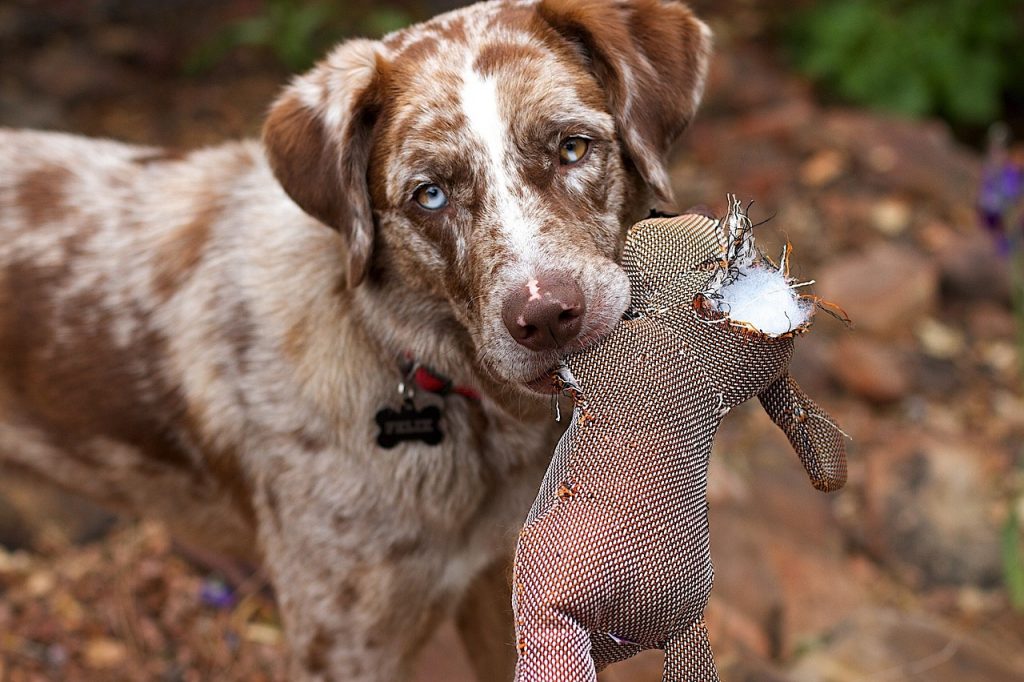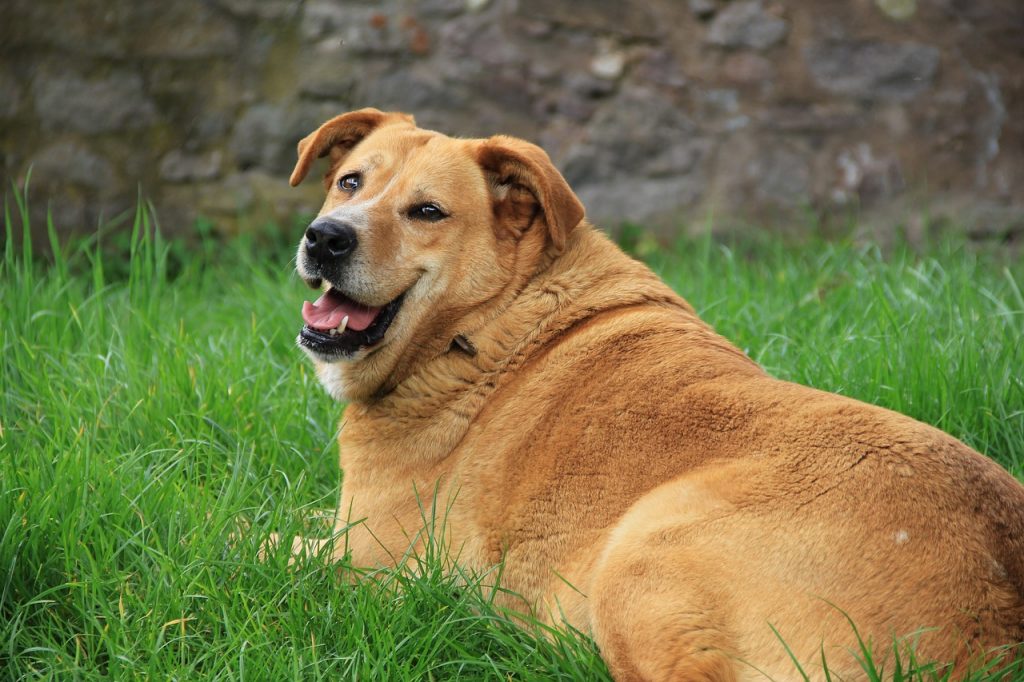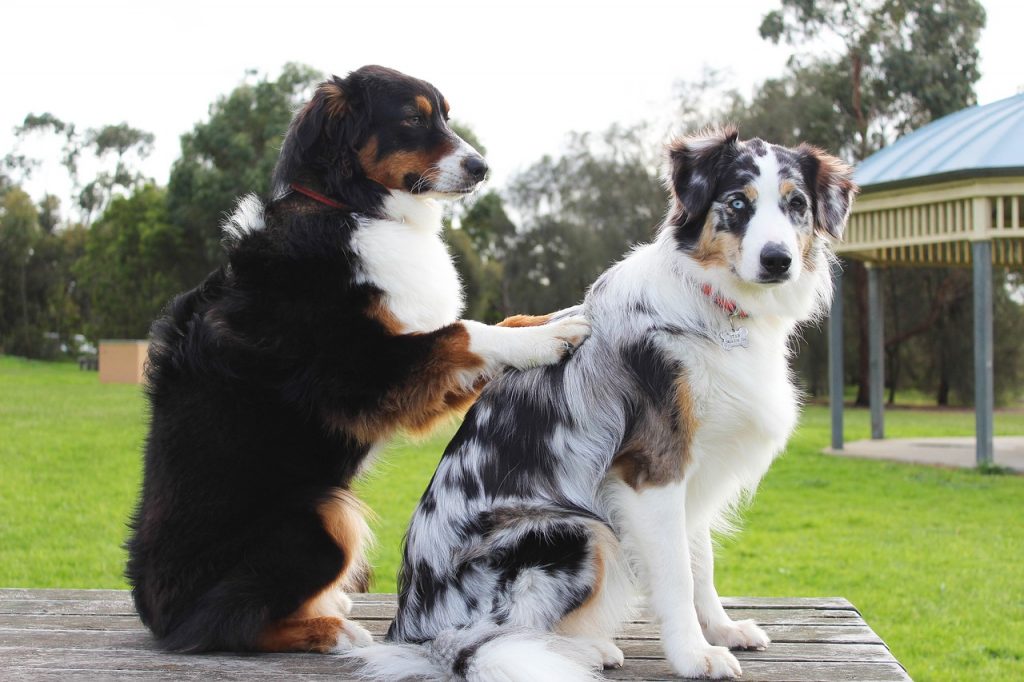Arthritis is one of the most common health conditions in older dogs. It comes on insidiously and may initially present with subtle changes in your dog’s behavior.
Treatment is best started early, as while Arthritis can’t be cured, the disease progression can be slowed down significantly. A multimodal management approach has been shown to be most effective, with a combination of treatment options better than any single treatment option.
*Arthritis replaces Osteoarthritis in all cases in this article
The article below breaks the main treatment options for dog’s with Arthritis into the following categories:
- Veterinary Treatment
- Supplements
- Weight Management
- Home Strategies
- Complementary Therapies
Veterinary Treatment
Nonsteroidal anti-inflammatory drugs (NSAID’s):
NSAIDs help reduce swelling, stiffness, and joint pain. They can provide excellent relief for a dog with Arthritis. NSAID’s are however known for causing side effects, so it’s important that you discuss these with your Vet.
Examples of some of the available NSAIDs just for dogs include:
- carprofen (Novox or Rimadyl)
- meloxicam (Metacam )
- deracoxib (Deramaxx)
- firocoxib (Previcox)
Never give your dog a human NSAID (e.g. nurofen, motrin, voltaren) without the express permission of your treating Vet.
Other Medications:
Because NSAIDs are usually good at relieving pain, Vets don’t often need to prescribe other kinds of painkillers for Arthritis. Sometimes however, your dog may need more options. Your Vet may talk to you about drugs like gabapentin or tramadol.
Disease Modifying Osteoarthritis Drugs (DMOAD’s):
DMOAD’s are nutriceuticals (supplements) that work by restoring joint lubrication, relieving inflammation, and renewing the building blocks of healthy cartilage. They are currently only available as an injectable so you will need to talk to your Vet. The two common DMOAD’s are:
Polysulfated glycosaminoglycan’s (PSGAG) – USA: e.g. Adequan
Pentosan polysulfate (PPS) – Australia and Europe: e.g. Cartrophen, Synovan, Pentosan 100, or Zydax
The different types of DMOAD’s have a slightly different mechanism of action so you may have superior results with one over the other.
Surgery:
In severe cases, when conservative measures are no longer adequate, surgery may be the only option. These surgeries are most often joint replacements and can have excellent results.
Please talk to your Vet if you are struggling to manage your dogs Arthritis conservatively.
*Your Vet may also provide complementary therapies as listed under the Complementary Therapies section of this article.

Supplements
EPA & DHA Omega 3 Fatty Acids:
Omega 3 fatty acids are a natural anti-inflammatory. Adding them to your dogs diet can reduce your dogs NSAID needs by ~25%.
Omega 3 fatty acids are commonly sourced from oily fish like sardines and salmon, fish oil, and green lipped mussels. You can also get omega 3’s from good quality dry pet food but sometimes it comes in the form of ALA (flaxseed) . Some dog’s can’t convert ALA (from flaxseed) to EPA, so make sure it’s and EPA / DHA Omega 3 supplement.
Glucosamine and Chondroitin Sulfate:
Known as chondroprotectants, this class of supplements act to preserve cartilage. Nutramax Cosequin DS & Paw by Blackmores Cosequin DS (Australia) are considered one of the best on the market.
Glucosamine, Chondroitin & Avocado / Soybean Unsaponifiables (ASU) :
Nutramax Dasuquin for Dogs. The next generation supplement, Dasuquin is a step up from Cosequin with the inclusion of the disease modifying osteoarthritis agent ASU.
If you would like more information on supplements for dogs with Arthritis, check out my article.

Weight Management:
Approximately 25% of overweight dogs develop musculoskeletal complications. The joints are required to carry excess weight they have to work harder, leading to injury or early degenerative conditions, such as Arthritis.
One of the major goals in Arthritis Treatment is to minimize the onset and progression of the disease. Proper weight management is a vital component and not to be overlooked.
This article on Weight Management in Dogs makes reference to ideal weight ranges and strategies to help with weight loss.

Home Strategies:
Minimizing jumping and sliding on floors are two of the most important strategies for the home.
- Use carpet, rugs, or mats on the floors. Alternatively, consider booties if you can’t modify your slippery floors.
- Use ramps or stairs for getting on and off higher surfaces or into / out of cars.
Its also important that you consider your dogs bed:
- Look for a firm orthopedic style dog bed. It should offer support much like your mattress does for you.
- Make sure your dog can get up and down off their bed. If you need to put it on a rug so that they don’t slide.
Read more about home strategies in this article.

Complementary Therapies
Manual Therapy:
The goal of manual therapy is to balance the musculoskeletal system and restore homeostasis through a “hands on” approach. If joints are struggling it may be because the muscles are tight, putting more strain through the area. Or it may be because adjacent joints aren’t working optimally.
Manual therapists can’t fix the Arthritis but they can use techniques to minimize any extra strain going through the Arthritic joint or joints. Take for example an arthritic elbow secondary to elbow dysplasia. If the shoulder and wrist aren’t functioning optimally, or the muscles in the area are tight, it may lead to more strain going through the elbow joint. Remove the tightness in the shoulder and wrist and it may ease the excess strain, and therefore the pain.
Manual therapists include Physiotherapists / Physical Therapists, Osteopaths, and Chiropractors with post graduate training in the treatment of animals. They are registered health professionals in Australia. The philosophies differ slightly but they are all essentially trying to achieve the same result – improve function and decrease pain.
There are also some massage therapists with further training in massage for dogs. Massage therapists can improve muscle health but they don’t have the assessment and diagnostic skills that the manual therapists above have. Some are however very skilled in a newly developing field.
Exercise Rehabilitation:
Exercise rehabilitation is an important component of your dog’s Arthritis management. It will ensure your dog’s muscles are kept strong and that range of motion in the joints is maintained.
Exercise rehabilitation programs can be provided by professionals that have completed the CCRP or CCRT course in the USA (look for these letters in their qualification). Alternatively, a Physiotherapist / Physical Therapist with post graduate training in canine rehabilitation would also be an excellent source of advice.
Exercise rehabilitation programs may include treatment delivered by the practitioner as well as home exercises.
Hydrotherapy:
Hydrotherapy is a form of exercise rehabilitation and may occur on an underwater treadmill, or in a pool supervised by a rehab professional.
Underwater treadmills are excellent for dogs struggling to walk normally. The buoyancy of the water offloads some of their weight allowing them to move more normally. Over time the controlled exercise strengthens their muscles and may allow them to return to pain free walking.
Swimming vs Hydrotherapy
Swimming usually occurs in a less controlled environment. It can be beneficial for mild or moderate cases of Arthritis where the dog is still relatively healthy and normal in its gait.
In more severe cases, or acute flares, swimming may however be counterproductive. It is harder to control speed, intensity, or proper limb use. The dog may not even used the injured limb. If they do use all four limbs while swimming, they also use a different pattern than a walking gait. This is important for dogs that are learning how to walk again.
Acupuncture:
Acupuncture is an ancient branch of Traditional Chinese Medicine (TCM). It’s been used in both people and animals for thousands of years. Acupuncture utilizes the body’s own ability to heal itself. Through this, it establishes health and balance in the patient.
Acupuncture can be delivered by TCM practitioners or by registered health professionals and Vets who have completed a Veterinary Acupuncture course. It is often a stand alone treatment.
Dry needling differs in its philospohy and the training required. Dry needling is a short course for registered health professionals and massage therapists. It focuses on the use of needles to target tight muscles or “trigger points”. Dry needling can be an effective treatment option and is often combined with manual therapy. In Australia there are limited courses in the use of Dry Needling in Dogs.
Laser Therapy:
Laser therapy is still a relatively new concept that is being used more recently to treat dogs with Arthritis, tendon or soft tissue injuries, and to promote wound healing.
Laser therapy uses deep-penetrating light to promote a chain of chemical reactions known as photobiostimulation. This process helps relieve pain through the release of endorphins, as well as stimulating injured cells to heal at an accelerated pace.
Treatment usually involves 2-8 visits that take approximately 3-8 minutes. It may be used as a stand-alone treatment, or in conjunction with manual therapy and/or exercise rehabilitation.
Training in Laser therapy usually involves a short course with the company the laser unit is purchased from. There are comprehensive treatment protocols that are applied to certain presenting complaints. The delivery of laser therapy to dogs does not seem to be regulated
Who is Delivering your Dog’s Complementary Therapy?
The treatment of dogs is not regulated in a lot of countries, Australia included (I believe the exceptions include the UK and certain US States). This can lead to people with weekend courses saying they treat dogs using all sorts of unregulated treatment techniques.
Check your practitioners qualifications. Physiotherapy, Physical Therapy, Osteopathy, and Chiropractor are all protected terms in Australia and most Western countries, so anyone calling themselves that MUST be registered with their government body.
This however does not automatically qualify any of these registered health professionals to treat animals. Further training is required. Some of the post graduate courses include:
- American Veterinary Chiropractic Association (AVCA): The primary national credential for Veterinary Chiropractic in North America. Certification is available to Vets and Chiropractors on completion of one of several courses, and completion of the AVCA Animal Chiropractic Certification Commission (ACCC) examinations.
- Master of Physiotherapy: Some countries also have a protected title called Animal Physiotherapist which is restricted with in their profession.
- Graduate Diploma in Animal Biomechanics: Available to Vets, Osteopaths and Chiropractors in Australia.
- Diploma in Animal Osteopathy: Available to Osteopaths in the UK (also available from time to time in Australia and New Zealand).
- Master of Science – Animal Manipulation: Available in the UK for Chiropractors and Osteopaths.
- CCRT – Certified Canine Rehabilitation Therapist: Delivered by the Canine Rehabilitation Institute in conjunction with Colorado State University. Available to Vets and Physical Therapists.
- CCRP – Certified Canine Rehabilitation Practitioner: Delivered by the University of Tennessee. Available to Vets, Physical Therapists, and approved health professionals (by application only).
- Veterinary Acupuncture: Acupuncture training for Vets and approved health professionals (by application).
Massage Therapy is not as well regulated as the registered health professions so my only advice is to check their qualifications and registration against your countries / states requirements. Also check the level of training they’ve completed in the treatment of animals.

Conclusion
Remember that treatment for Arthritis is best started early. There is no cure, but there are treatment options available to help manage your dog’s Arthritis.
If you’d like more information on early Arthritis symptoms click here.
None of the information within this article replaces the advice or recommendations of your treating Vet. Please talk to your Vet about your Dog’s ongoing Arthritis Management.

